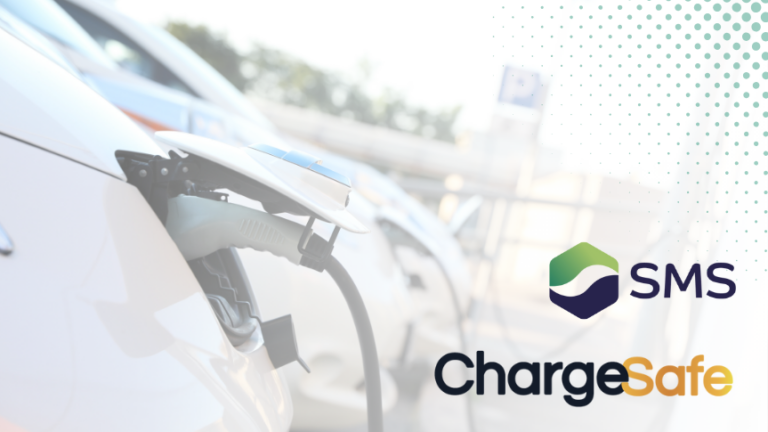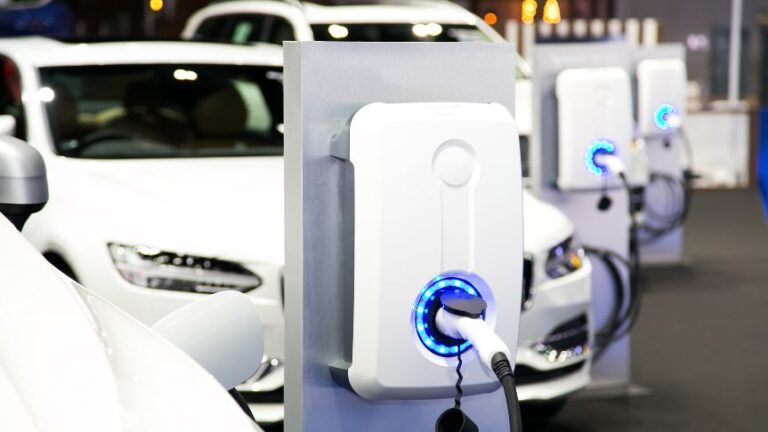Smart charging: the EV solution for a smarter grid?

EVs could become a key tool for achieving grid stability, as well as offer benefits to consumers and businesses.
Since the UK government announced in July 2017 that the sale of all petrol/diesel cars and vans will be banned by the year 2040, the not-so-long-ago fanciful notion of universal electric transportation has become a far more realistic scenario in the minds of the British public.
Indeed, the idea that one day in the relatively near future we will all be driving around in electric vehicles, or EVs, is a rather exciting prospect – at least for most people, anyway. For the country’s distribution network operators, the reality is a slightly more daunting one.
There are now over 100,000 EVs registered in the UK, and this is expected to rise exponentially in the coming years as affordability, choice and technology improves alongside availability in public charging facilities.
Pretty soon, there will be millions of these mobile batteries not only whirring around on our roads, but also connecting to the grid.
The implications that this will have on our electricity system is one of the biggest issues surrounding EVs as we face their inevitable, imminent rise.
EV’s potential impact on the grid
With various studies having found that EV owners currently tend to charge their cars at the end of their working day – coinciding with when energy demand is already at its peak – the major question being posed is this: how will the system be able to cope if charging habits remain the same when EVs are in much wider use?
To put the potential demand increase into some perspective, it is estimated the draw on the grid for each single EV is equivalent to that of an entire house. Thus, hypothetically speaking, if a network feeder line had 2,000 homes on it, and 400 of those households decided to charge their EVs at the same time in the early evening, then peak demand would rise by a massive 20 percent.
It is highly likely in this case that demand would far outstrip supply, resulting in such system chaos as transformer overloads, feeder congestion, and undue circuit faults.
The consequences of this would be widespread power outages, bringing catastrophic disruption to everyday life.
Evidently, this cannot happen. So what’s the alternative?
Demand-side response
The traditional answer to meeting greater energy demand has simply been to build more power plants and perform regular upgrades to the grid. However, this is today seen as an extremely expensive and unsustainable solution.
Therefore, the utilities industry and energy customers alike are left with a huge incentive to work within existing grid resources in order to maximise efficiency and cut down costs.
This is where EVs, if utilised as a demand-side response mechanism, could turn a problem into an opportunity.
Demand-side response, or DSR, relates to how consumers can use (or be incentivised to use) energy more intelligently in order to lower or shift electricity demand at peak times.
As the National Grid puts it, DSR provides an important tool to “ensure a secure, sustainable and affordable electricity system…helping soften peaks in demand and fill in the troughs.”
In this context, far from adding to stress on the grid, EVs can actually become a key tool for grid stability, allowing electricity distributors to manage peak load and maintain reliability of supply.
How is this so?
Two methods that have been identified as ways in which EVs can contribute to this ‘Smart Grid’ scenario are Smart Charging and ‘Vehicle to Grid schemes.
Smart Charging
Smart charging – also called managed charging – is the proposed intelligent charging of EVs, where charging can be shifted based on grid loads and in accordance with the vehicle owner’s needs.
It would mainly be used to reduce peaks in demand (i.e. when everybody gets home from work and plugs in their electric vehicle), although could also be used to provide high frequency response (an increase in demand in response to a rise in system frequency).
As an incentive, utility companies can offer EV owners monetary and/or non-monetary benefits in exchange for enrolment in a programme that permits controlled charging at the times when curtailment capacity is needed for the grid.
In the UK, Scottish and Southern Electricity Networks has already trialled DSR in this area with “breakthrough” success, while Electric Nation – a Western Power Distribution project – announced in March 2017 that it is to undertake the largest smart charging trial of its kind seen so far.
Preliminary results for this trial, presented by Electric Nation in early September 2017, back up the concept of smart charging as a “key solution to the impact of increasing numbers of EVs on the electricity network”.
Vehicle to Grid (V2G)
Whereas Smart Charging involves one way flow of electricity from the charger to the car, V2G facilitates a two-way flow of energy from and to the EV. This means that if the grid was short on power (e.g. a power station suddenly goes offline), then the vehicle could provide power to the grid, helping balance the network.
Operating under a V2G system, EVs have the potential to become an extremely flexible asset – as well as providing transportation, they can undertake smart charging, thereby reducing demand as required, and can also export power back to the system.
As things stand, V2G has been tested in a small number of pilots; however a number of technical and regulatory issues need to be overcome before it can be widely and effectively used. In significant news for the technology, the UK Department for Business, Energy & Industrial Strategy (in collaboration with the Office for Low Emission Vehicles and Innovate UK) announced in July 2017 that it is making £20 million available to businesses who want to help develop V2G projects around the country.
The future
Though Smart Charging and V2G technologies are still in the development stage, the concepts of both have already been proven as viable methods for addressing grid stability. The major challenge now will be in how to commercialise these technologies and roll them out on masse to EV owners.
For this to happen, significant cooperation and engagement will be needed between many different parties – developers, DNOs, energy suppliers, government, and consumers – and this may not be easy, especially as it is estimated to cost £2.2 billion by 2050 to upgrade local electricity infrastructure.
Expert energy consultants like us, however, are well placed to facilitate these discussions.
Meanwhile, what should be clear for all to see going forward is this: instead of being considered as a threat to the electricity system, EVs are able to play a fundamental role in achieving the smarter, more sustainable grids of the future.
While the market is still nascent, the UK government is now at last throwing some weight behind EVs and charging technology, meaning opportunities should arise for everyone to take advantage.
Incentivised workplace charging schemes, for instance, are just one possible area where all sides could benefit, with consumers getting a discount, businesses getting to ease their peak demand, and operators aided in balancing the system and avoiding major infrastructure investment in the long term.
As for energy companies, such EV charging services will bring added value to their service portfolio and also make them future-proof.
What’s more, charging initiatives could prove to be a gateway for consumer adoption of other utility-managed DSR schemes. This, along with continued development in the areas of energy storage, distributed energy generation, and smart metering, will allow the smart grids of tomorrow, to soon become a reality.
*This is the first in a new series of articles examining the potential impact that electric vehicles will have on our society, addressing the challenges and opportunities they will create for all of us, be it industry stakeholders, businesses or everyday energy consumers.*
For more information on how we can help you with EV-related business opportunities, contact one of our team on 07376 490 650, or email us and we’ll get back to you.


